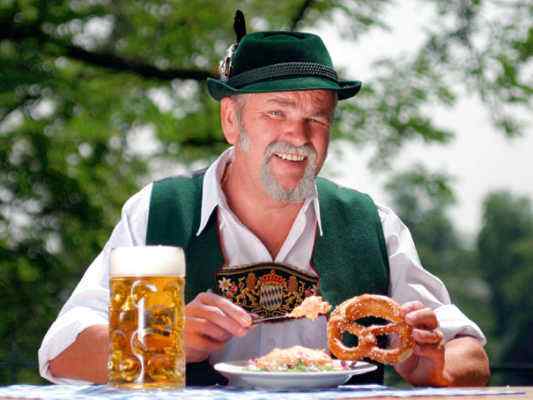
History of the Beer-Carden in Bavaria
We owe the beer-gardens to the Catholic church and two of its canonized saints. In A. O. 1539 the Bavarian regulation for breweries allowed brewing only between Michaelmas (29th of September) and St. George´s day (23rd of April). From the end of April to the end of September brewers in Munich were strictly forbidden to brew because boiling entailed the danger of fire. Boilers were sealed off in the hot and dry summer months.
Consequently brewers had to stockpile beer, especially "March beer", a kind of stingo, rich in hop and not easily spoilt. But the main problem was: How can you preserve beer over the summer months in an age without refrigerators and cold-storage chambers?
Clever brewers constructed underground beer-cellars, and there they heaped up lots of solid ice lumps, gathered in winter from frozen lakes or ponds. New difficulties arose from relatively high ground-water levels; it was not possible to construct very deep cellars. The shade of trees was to ensure lower temperatures. Horse-chestnut trees were planted over the beer-cellars to provide shade, because these trees have the largest leaves and give best shade. Hence the linkage of beer and chestnut.
Why are there "beer-gardens" ?
The brewers in Munich wanted to sell their product the shortest way, so they put up tables and benches under the chestnut trees and offered draught beer.
The innkeepers in Munich kind of revolted against this new sales method. Brewers are to brew, but not to sell beer - was the battle cry. To prevent a serious riot King Ludwig made a wise decision. He allowed selling beer under the chestnut trees, but he forbade selling food. The consequence was that customers who wanted to enjoy a cool drink of tasty lager in the shade of the trees had to bring their own food - bread and butter, sausage and cheese, radish and mustard together with tablecloth and cutlery
Customs have changed. Today in most beer-gardens self-suppliers are no longer welcome.
back to the Homepage of Altmuehl valley ![]()
Zuletzt aktualisiert am 10.02.2017